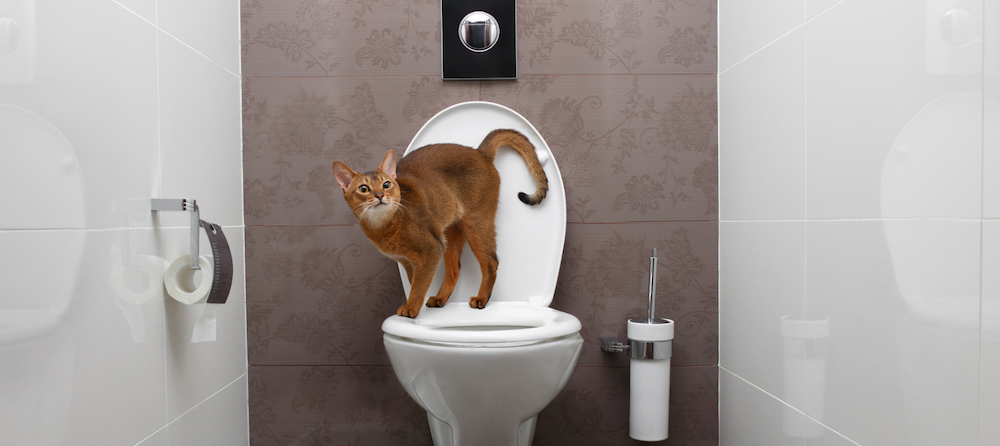Never Flush Cat Poop Down Your Toilet - Protect Your Plumbing System
Never Flush Cat Poop Down Your Toilet - Protect Your Plumbing System
Blog Article
The content listed below in relation to How to Dispose of Cat Poop and Litter Without Plastic Bags is definitely engaging. Check it out yourself and see what you think of it.

Introduction
As feline proprietors, it's essential to be mindful of just how we throw away our feline friends' waste. While it may seem hassle-free to purge cat poop down the commode, this technique can have destructive consequences for both the environment and human health and wellness.
Alternatives to Flushing
Fortunately, there are safer and much more accountable means to dispose of cat poop. Think about the complying with options:
1. Scoop and Dispose in Trash
One of the most typical technique of getting rid of feline poop is to scoop it right into a biodegradable bag and throw it in the trash. Be sure to use a devoted litter scoop and get rid of the waste promptly.
2. Use Biodegradable Litter
Opt for biodegradable cat litter made from products such as corn or wheat. These clutters are eco-friendly and can be securely taken care of in the garbage.
3. Hide in the Yard
If you have a lawn, consider burying cat waste in a marked location far from vegetable gardens and water sources. Make sure to dig deep enough to prevent contamination of groundwater.
4. Mount a Pet Waste Disposal System
Buy a pet dog waste disposal system particularly created for pet cat waste. These systems make use of enzymes to break down the waste, minimizing smell and environmental impact.
Wellness Risks
Along with ecological issues, flushing pet cat waste can likewise pose wellness threats to humans. Pet cat feces might include Toxoplasma gondii, a parasite that can trigger toxoplasmosis-- a potentially extreme health problem, especially for pregnant females and individuals with damaged body immune systems.
Ecological Impact
Flushing cat poop presents hazardous virus and bloodsuckers into the water, posturing a considerable threat to aquatic ecosystems. These pollutants can negatively affect marine life and compromise water top quality.
Final thought
Responsible family pet possession prolongs past supplying food and shelter-- it likewise entails correct waste administration. By refraining from purging pet cat poop down the bathroom and opting for alternate disposal approaches, we can reduce our ecological footprint and secure human wellness.
Why Can’t I Flush Cat Poop?
It Spreads a Parasite
Cats are frequently infected with a parasite called toxoplasma gondii. The parasite causes an infection called toxoplasmosis. It is usually harmless to cats. The parasite only uses cat poop as a host for its eggs. Otherwise, the cat’s immune system usually keeps the infection at low enough levels to maintain its own health. But it does not stop the develop of eggs. These eggs are tiny and surprisingly tough. They may survive for a year before they begin to grow. But that’s the problem.
Our wastewater system is not designed to deal with toxoplasmosis eggs. Instead, most eggs will flush from your toilet into sewers and wastewater management plants. After the sewage is treated for many other harmful things in it, it is typically released into local rivers, lakes, or oceans. Here, the toxoplasmosis eggs can find new hosts, including starfish, crabs, otters, and many other wildlife. For many, this is a significant risk to their health. Toxoplasmosis can also end up infecting water sources that are important for agriculture, which means our deer, pigs, and sheep can get infected too.
Is There Risk to Humans?
There can be a risk to human life from flushing cat poop down the toilet. If you do so, the parasites from your cat’s poop can end up in shellfish, game animals, or livestock. If this meat is then served raw or undercooked, the people who eat it can get sick.
In fact, according to the CDC, 40 million people in the United States are infected with toxoplasma gondii. They get it from exposure to infected seafood, or from some kind of cat poop contamination, like drinking from a stream that is contaminated or touching anything that has come into contact with cat poop. That includes just cleaning a cat litter box.
Most people who get infected with these parasites will not develop any symptoms. However, for pregnant women or for those with compromised immune systems, the parasite can cause severe health problems.
How to Handle Cat Poop
The best way to handle cat poop is actually to clean the box more often. The eggs that the parasite sheds will not become active until one to five days after the cat poops. That means that if you clean daily, you’re much less likely to come into direct contact with infectious eggs.
That said, always dispose of cat poop in the garbage and not down the toilet. Wash your hands before and after you clean the litter box, and bring the bag of poop right outside to your garbage bins.
https://trenchlesssolutionsusa.com/why-cant-i-flush-cat-poop/

As an avid person who reads about How to Dispose of Cat Poop and Litter Without Plastic Bags, I think sharing that excerpt was smart. In case you liked our post kindly remember to share it. I cherish reading our article about Don’t flush cat feces down the toilet.
Book Appointment Now Report this page